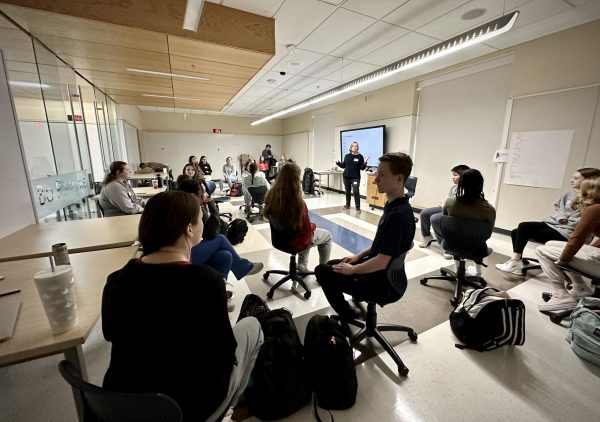Impeachment: Beyond the Headlines
February 4, 2020
As high school students, it is often hard to ignore the criticism of the media as biased, or “fake news.” When reading through articles or catching a bit of the news on television, one often needs to sift through flashy headlines and bold opinions to find the actual information. So, is it possible to view the facts of newsworthy political events without a skewed lense?
When understanding President Trump’s impeachment trial, as young adults and citizens who may be voting soon, it is important to have a basic understanding unclouded by biased reporting.

From The Beginning
The first part of any impeachment process is the inquiry. This involves investigations and gathering evidence that an impeachable offense was committed. Nancy Pelosi, Speaker of the House, announced in September that 6 committees within the House of Representatives would begin investigating Trump’s actions.
The Trump investigation was centered around a series of phone calls and agreements made by President Trump and his associates in July of 2019. Since 2014, Ukraine has been engaged in military conflicts with Russia and Russian-backed groups. The United States has consistently sent aid to Ukraine to deter Russian aggression, until July 18, 2019. President Trump had put 391 million dollars of Congress-approved aid to Ukraine on hold. 7 days later, on a phone call with Ukrainian president Volodymyr Zelensky, Trump asked for an investigation into Joe Biden and his son Hunter Biden. At the time, Joe Biden had been leading the polls as the most likely Democratic candidate for the 2020 election, meaning he would be most probable to face Donald Trump in 2020.
The investigation into these events was spurred by a complaint by an anonymous “whistleblower.”
Impeachment in the House
In the House of Representatives, witnesses are called to give testimony about the matter at hand. In Trump’s impeachment hearings, many ambassadors and key government leaders were called to testify before members of the House of Representatives. The House cast a majority of votes to pass the Articles of Impeachment, meaning not that Trump is removed from office, but simply charged with committing “treason, bribery, or high crimes and misdemeanors.” Specifically, President Trump was charged with abuse of power and obstruction of Congress, of the latter category.
Key Witnesses:
- Gordon Sondland- U.S. Ambassador to the E.U.
Confirmed that Trump’s actions were “quid pro quo,” despite previous remarks stating that there was none. As a Republican supporter and supposed conspirator in the Ukraine scandal, his testimony surprised many. Quid pro quo is Latin for “a favor for a favor” and means an exchange of one thing/action for another. In this case, it would be aid to Ukraine in exchange for their investigation of the Bidens.
- Marie Yovanovitch- Former U.S. Ambassador to Ukraine
Testified that Trump and Rudy Giuliani (Trump’s attorney) removed her from her post in Ukraine because she wouldn’t comply with the withholding of aid.
- Dr. Fiona Hill- Former National Security Council Official
Confirmed that there was a “secretive” foreign policy being carried out by Trump and his advisors that contrasted to the policy presented to the public.
- Bill Taylor- Current Ambassador to Ukraine
Replaced Marie Yovanovitch. Confirmed that there was a clear intention to withhold money until Ukraine agreed to investigate.
Trial in the Senate
In the Senate, proceedings occur for the most part like a courtroom trial. The judge presiding over Trump’s case is Chief Justice John Roberts. In the Senate, the Republicans make up the majority of Senators, thus led by “majority leader,” Mitch McConnell, whereas Chuck Schumer (D), is “minority leader,” as he heads the Democratic Senators.
During the trial, the prosecution and defense present their respective arguments. The prosecution, led by Representative Adam Schiff, presented arguments against Trump, and the defense, led by Pat Cipollone, White House Counsel presented the opposing arguments.
In the Senate trial, the primary argument of defense was that Trump’s actions did not rise to the level of an impeachable offense..
After the opening arguments and further questioning, the Senate voted against calling witnesses and presenting additional evidence. This means John Bolton, a potential witness, did not testify. Bolton allegedly was asked by Trump to make calls to Zelensky about the Biden investigation during the scandal. However, this information can not be considered as witnesses were not called.
The closing arguments in the Senate trial were presented on Monday, February 2, 2020.. The final vote is expected on Wednesday, February 5. ⅔ of the Senate needs to vote in favor of conviction for the President to be removed from office. If there are less than ⅔ votes for conviction, the President will not be removed from office.
















